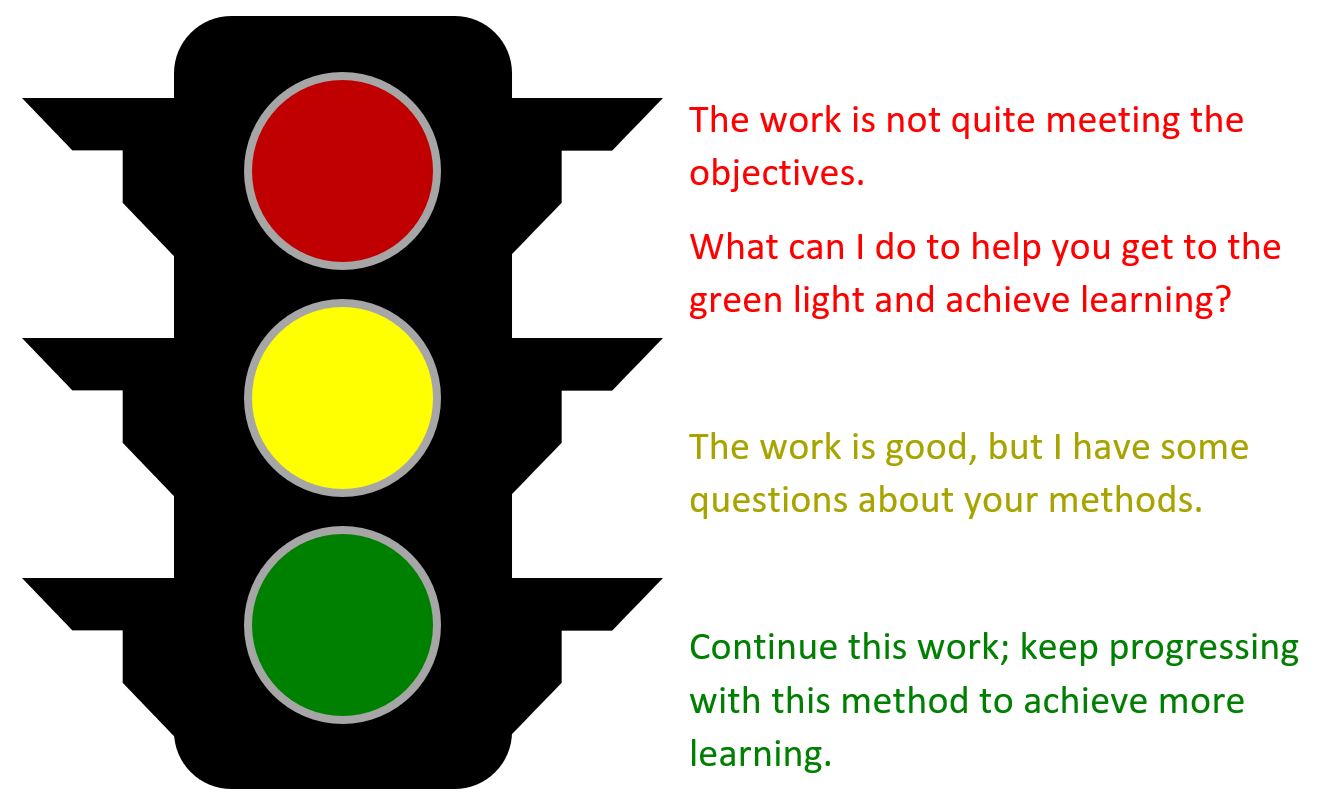10.1 Assessment
One of the most important characteristics of an educator is the ability to effectively assess students. Assessment, or learning assessment, is the ability to gather information about students to understand their competencies in relation to learning objectives. In addition, it provides guided information to help them advance their learning, question methods, or restructure their focus. A more contemporary framework of assessment is less about checkmarks and x’s, but using other factors of learning, such as advancement, questioning, and restructuring. For example, the analogy of a stoplight can be used by an instructor to guide a student through assessment.

The stoplight analogy is a way to move beyond the classic right or wrong finality and offers a different avenue of achieving learning outcomes. When an answer or a student’s work is incorrect, the teacher should use these errors as teachable tools. They serve, as a starting point to construct strategies that build on the student’s existing knowledge. The student can then improve, and apply, these techniques to the existing work, and prevent future errors on upcoming assignments.
Some of the common glossary words that show up in relation to assessment are outcomes, rubrics, missions, goals, and alignment. Regardless of assessment, these are important factors that impact how learning assessment achieves learning objectives. In Gordon Joughin’s work, Assessment, Learning, and Judgement in Higher Education, the collection of essays focus on different forms of assessment through new modes and systematic inquiry. Joughin concluded that students should be at the centre of the assessment in higher education, with time allocated to students to fully comprehend the assessment, making it a focal point in higher education institutions[1]. If we use our glossary as an example, how would this look?
- Rubric: A table of expectations and requirements for each marking range and learning category, written in descriptive language
- Goals: Creating effective steps for the learner, that are rational and achievable, in order to effectively meet expectations
- Constructive Alignment: Aligning learning outcomes, teaching practices, and assessment of learning to ensure they mutually reinforce each other
Because assessment and technology are important, the key question comes from the transmission of content. Bates describes seminars and tutorials for online teaching. Online seminars and tutorials offer a flexible way for students and educators to achieve learning objectives[2]. However, educators must always be aware of the effect of their teaching methods. Joughin asserts that learning and assessment should be student-focused. Use the activity below to develop an understanding of the role of assessment in learning.

